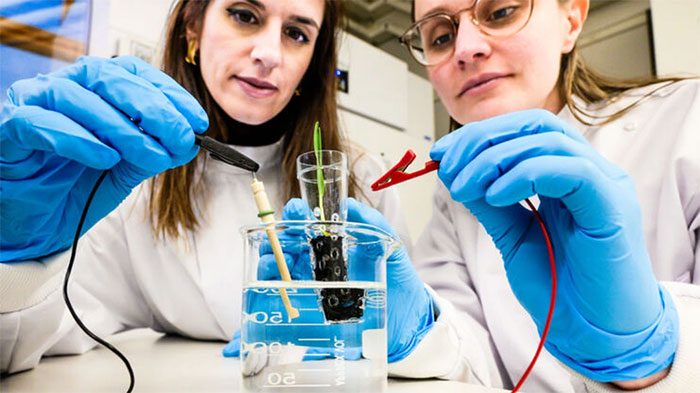The action may sound like a joke, but in reality, it can create developmental benefits for crops.
Just like human neurons, plants thrive on electrical signals. Although we often cannot see or feel them, electrical impulses traveling through plant tissues can lead to surprising effects.

Electrical stimulation therapy has surprisingly effective results for crops. (Photo: SA).
Based on this principle, a group of researchers from Sweden has developed a hydroponic system using electrical voltage, targeting barley plants.
In their study, they placed 5-day-old barley plants on a specially designed scaffold, exposing them to low voltage for 5 days.
This system is called “eSoil,” comprised of materials made from conductive polymers and cellulose—a crucial component of plant cell walls.
After this step, the barley plants were monitored for an additional 5 days before harvesting.
The result was that the electrically stimulated barley exhibited a 50% increase in growth and was 30% longer compared to plants that did not undergo this method after 15 days of growth.

A barley plant growing in the eSoil system. (Photo: SA).
Although the researchers have yet to clarify how electrical stimulation affects the growth process of crops,
one hypothesis suggests that electrically stimulated plants seem to absorb nutrients more effectively, thereby directly influencing their growth process.
In fact, studies indicate that stimulated plants process nitrates more efficiently, with lower levels of inorganic nitrogen compounds compared to plants that did not receive this treatment.
Interestingly, the sudden growth of barley did not occur immediately upon electrical stimulation but took place during the 5 days of growth following the removal of the electrodes.
This suggests that even low and brief electrical inputs have the potential to create lasting impacts on plants.


















































